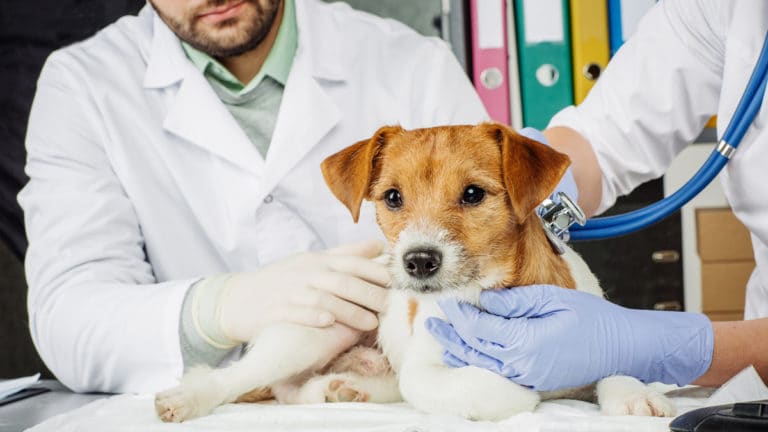In low numbers, yeast in dogs is considered normal. Yeast is commonly an inhabitant of a dog’s skin and ears. Every dog will carry a few yeast around with them, but if there is a problem with the immune system, if a dog has wet ears, ear mites or excessively long ear canals, or if a dog has skin allergies, then the yeast can grow out of control and cause problems.
Symptoms of a Yeast Infection in Dogs
How do you know if your dog has a yeast infection in his ear? Check out the symptoms below that are classic signs your dog has a yeasty ear infection and needs to see the veterinarian stat
Musty Odor
Yeast infections in dogs are caused by a fungus called Malassezia pachydermatis. This is an opportunistic fungus that lives on dogs and waits for a chance to divide like crazy.
If you take a swab of ear wax from a dog with a yeast infection, then you can see large numbers of little budding yeast that look like purple bowling pins under a microscope. In the veterinary world, we call that a yeast party!
Ears or skin infected with yeast will have a classic pungent odor that smells like a musty, wet dog. A healthy dog’s ears should have no odor.
If you detect an odor coming from your dog’s ears, especially if it is combined with any of the other signs of a yeast infection, then schedule a visit with your veterinarian immediately.
Dark, Brown Ear Discharge
Yeast, bacteria and mites can all infest or infect the ear canals of dogs and can cause the ear to secrete different types of discharge. A yeast infection causes a classical brown discharge that can range in color from light brown to dark brown, with dark brown discharge being the most common.
If your dog’s ears have dark brown discharge, then yeast is likely the culprit, and you need to make an appointment to have your dog’s ears seen by a veterinarian.
Itchy, Red Ears
Yeast infections in dogs can be itchy and painful. If your dog is excessively scratching, rubbing or shaking his ears, his ears may be infected.
One mistake that pet parents often make when they notice their dog shaking his head or scratching is to try and fix it with an over-the-counter ear cleaner. This often makes the infection worse, leading to more pain, more expense and possible hearing loss. Don’t be that pet parent.
If your dog’s ears are red and itchy, see your veterinarian pronto.
Dog Yeast Infection Treatment
Dog ear infections due to yeast overgrowth are almost always a secondary problem. If you kill the yeast with anti-fungal medication, but don’t address the underlying problem—ranging from allergies to swimmer’s ear and hairy ear canals—then the yeast infection will come back.
Make sure to discuss this with your veterinarian and ask for recommendations on the best dog ear care to prevent ear infections in the future. Sometimes your veterinarian will recommend maintenance ear cleaning once or twice a week to prevent reoccurring ear infections with a prescription or OTC cleaner, like Zymox Ear Solution.
If your dog has seasonal skin allergies that cause ear infections, your veterinarian can recommend allergy medication. If your dog swims a lot and develops yeast infections secondary to swimmer’s ear, you can help prevent yeast overgrowth by instilling a few drops of a drying rinse like
Dogs that have a yeast ear infection often have a bacterial ear infection as well, requiring prescription anti-bacterial ear drops to treat. Veterinarians often carry ear drops that are combination products containing a steroid to reduce pain and inflammation, an antibiotic for bacteria and an anti-fungal for the yeast.
Give all medications as prescribed, finish the full course of treatment, and make sure to take your pet back to the vet for any rechecks that are recommended to make sure the infection is taken care of.
If the infection is mild, it is likely that your dog will be feeling really good after a day or two of treatment, making it really tempting to not finish the full course of medication. Don’t do that—not finishing the medication completely can predispose your dog to recurrent ear infections that are resistant to treatment.

Featured Image: Chewy Studios
Share:











